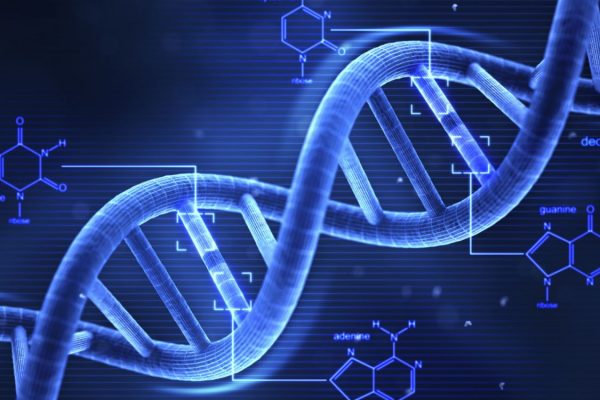by: Miranda Hurtado
While rare, mitochondrial diseases can often be deadly for those who inherit them. Recent research has focused on finding ways to cure these diseases or to eliminate them altogether. One noteworthy milestone in this research is the birth of the world’s first “three parent baby” using MRT, mitochondrial replacement therapy.
This “three parent baby” contains DNA from three individuals. The father’s sperm remains intact during this process while the nucleus from the mother’s egg cell is extracted and inserted into a donor egg cell. This technique effectively replaces the mother’s mitochondrial DNA with the donor’s mitochondrial DNA. While the baby technically has DNA from three people, the baby’s physical features and traits are determined by nucleic DNA. The donor’s mitochondrial DNA contributes very little to the baby’s appearance or characteristics, other than the absence of a potential mitochondrial disease. Hence, there would be virtually no changes in the appearance of the baby due to this procedure. For women with a history of mitochondrial disease and a desire to become a mother, this procedure could prevent the development of the deadly illnesses in their children.
Although the birth of this child is certainly groundbreaking, MRT has not been studied extensively enough to be adopted and practiced regularly. It remains illegal to perform this procedure in many countries, including the United States, and only has recently become legal in the United Kingdom. Research on the mitochondrial genome is required to understand the potential risks involved in conducting MRT. Some of that research has taken place at UC San Francisco by Patrick O’Farrell, PhD.
Dr. O’Farrell is a professor at the department of Biochemistry and Biophysics at the University of California, San Francisco whose research lab focuses on the cell cycle and mitochondrial genome. In his lab’s latest publication in the June 2016 issue of Nature Genetics, titled “Selfish drive can trump function when animal mitochondrial genomes compete”, they found that closely related mitochondrial genomes have a better chance of being transmitted from mother to child. When mitochondrial genomes were not closely related, the introduced genome was not favored for transmission regardless if the other genome had a harmful mutation. O’Farrell refers to this mechanism as “selfish selection”.
These findings were discovered through a series of experiments involving mainly Drosophila melanogaster, otherwise known as the common fruit fly. In order to study the effects of competing mitochondrial genomes, flies containing a genome with a “temperature sensitive lethal mutation” were paired with related genomes and unrelated genomes. The related genomes share more DNA in common with the original genome than unrelated genomes do. Due to the mutation’s unique reaction to differing temperatures, fruit flies were observed while the temperature was varied and the mutation alternated between active and inactive. For the fruit flies that had a closely related genome inserted alongside the genome with the mutation, the genome with no mutation was successfully transmitted to future generations. Although the fruit flies with the unrelated genome were able to reproduce, it was observed that this particular lineage did not last beyond a few generations due to the lethal mutation being passed down. Interestingly enough, it was also noted that the changes in the temperature, particularly when the temperature was optimal for the mutation, did not affect the fruit fly’s ability to reproduce – it only affected the number of generations the flies were able to produce. Due to these observations, O’Farrell and his lab were able to conclude that selfish selection indeed occurs when mitochondrial genomes compete.
The paper is drawn to a close with the following quote:
“To conclude, our findings show that competition between distantly related mitochondrial genomes can be dominated by the selfish drive of a genome rather than its contribution to the fitness of an organism. As a caution, the incompatibilities observed suggest that the success of planned efforts to treat mitochondrial diseases using mitochondrial donors may well depend on the competitive strength of the donor’s mitochondrial genome.”
Dr. O’Farrell directly acknowledges the importance of his research in terms of treating mitochondrial diseases and briefly mentions its implications and highlights another important aspect of the mitochondrial genome being transmitted. Genomes that are distantly related may successfully be passed onto progeny as long as they are “competitively strong” genomes. “There’s constant battles [among genomes] and the mitochondrial transmission represents a rather intense battle” says Dr. O’Farrell. He further explains that the strong genomes or “bully genomes” are usually the ones with mutations that allows the genome to transmit at a faster speed. These “bully genomes” then have the ability to wipe out the weaker genomes or “wimpy genomes.” Therefore, two things must be taken into consideration: the compatibility between genomes and their competitive strengths. Both these aspects are important to consider when analyzing and researching mitochondrial replacement therapy.
While mitochondrial replacement therapy has both supporters and opponents, research in the scientific community continues to move forward. Although not of immediate application to the “three parent child” treatment , Dr. O’Farrell’s research contributes to the knowledge needed to further advance this technique. If MRT gains momentum and is backed by data that reaffirms its safety and sustainability, the number of people who are born with fatal mitochondrial diseases may drastically decrease over the next several years.




